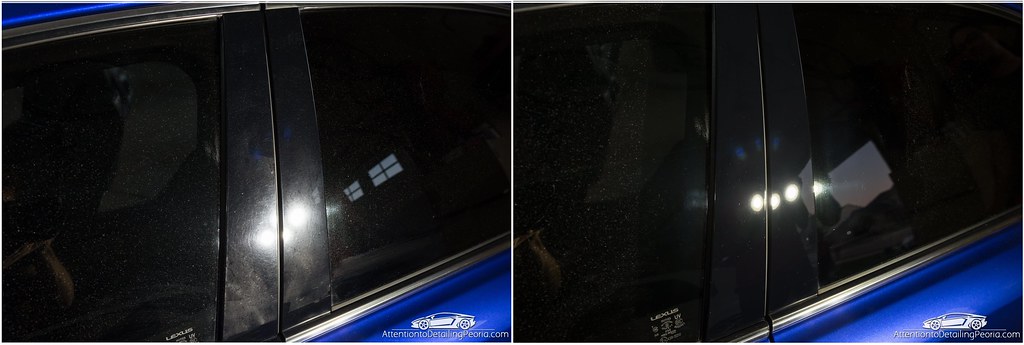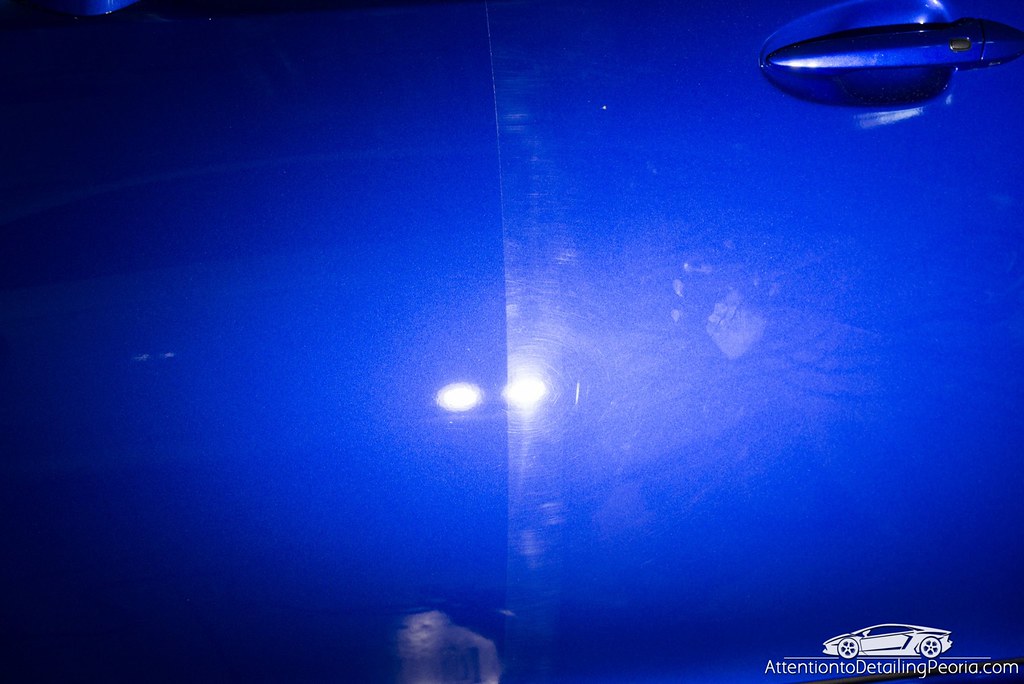Product Review: Griot’s Garage Fast Correcting Cream
by Zach McGovernPaint correction makes up the majority of my business. It is the art and science that really got me into high end detailing, and surely the reason many of you have found Detailed Image and are reading these articles right now.
There is an abundance of abrasive liquids on the market which all claim they can do something better than the next guy. Well, we’ve tried most of them throughout the years… most work very well, some are revolutionary, and a few fail to meet our high expectations. With that being said, I always enjoy trying new compounds and polishes as I always want to produce the absolute best results while also saving some time and reducing overall effort when at all possible.
In days past, if you needed a product that would provide good cutting ability for defect removal, it came at expense of sacrificing clarity and gloss. Thankfully many manufacturers have been working to bridge the gap by creating products that can cut nicely while also finishing down better than you might expect. So far, this is exactly what the Griot’s Garage Fast Correcting Cream has done for us.

My preferred method is to use the Fast Correcting Cream with a Griot’s Garage Fast Correcting Pad or Microfiber Pad. These two pads work great with this product and have produced an excellent finish in most situations I have used them in to date. If needed, a Griot’s Garage Microfiber Fast Cutting Pad can also be used for even more defect removing power, but as expected this may introduce some marring/haze to the finish (as seen in the last image in this article).

Fast Correcting Cream has been incredibly easy to work with. When used with a clean pad, there is virtually no dust. The work time is exceptional as well. We tend to make 3-6 passes with this product depending on the situation, and I am confident I could continue working the product much longer without any drying up or sticking to the paint. The residue wipes away quite easily, and as already mentioned, the finish is very nice for a heavy cutting product. In most instances, only a light polish is needed to refine the surface afterwards.

This has become my go-to compound lately, and surely something that will remain on my shelf for quite some time.








I’ve been using Griot’s creams with the 15mm Boss and new pads and the swril mark’s come out so much easier it really makes me look good.
Great article yet again. I’m really curious if the The Boss 21’s correction rate in noticeably improved if pair with the 5″ backing plate. Any experience in that area yet?
Yes – we use both 6″ and 5″ pads on our BOSS G21 and Rupes LHR21ES. These machines are both very powerful and have no trouble maintaining pad speeds fast enough to cut with larger pads. If you’re using a larger pro machine like a BOSS or Rupes Bigfoot then the difference between 5″ and 6″ in terms of cut is not noticeable. Smaller machines like the the Porter Cable 7424Xp and Griot’s Garage 3rd gen can loose some cutting performance with larger pads.
Hi Zach,
I need your advice, I have the G15, and the first time I used the MF Pad, after I cleaned it, I noticed it started to peel the velcro off from the sponge. What speeds you use and how do you wash them? first I used compressed air, when finished using them, I sank them into a bucket with some diluated APC, I don’t know if the APC eat the glue from the velcro or if I used it in a bad way, maybe too much time or speed.
Did you have any trouble with MF Pad velcro peeling off?
Microfiber pads will not typically last as long as foam pads, however you should still see plenty of life out of them when used properly. To avoid overheating during use, cycle through pads as you work. If you have 2 pads, use one for one panel, then remove it and allow to cool while you use the 2nd one for the next panel, and so on. Extended use will generate a lot of heat and the foam material can actually melt and ruin the pad.
When it comes to cleaning them, we blow them out or brush them out after each section. After I am finished with the pad, I will spray the face with APC, then rinse under warm water while brushing with a pad cleaning brush. I then let them air dry on a drying rack. Before using them again, I will blow them out with compressed air to remove any dried product that still remains.
Keep in mind, pads are a wear & tear item. They will need to be replaced over time depending on how much you use them. I typically buy some new pads with every order I place because we go through them quickly.
Zach I agree with everything you said. I love my BOSS 21 along with their products. I do use the 5″ backing with it instead of the 6″ do to contours of the vehicles and feel that I have better control.
Love your articles, so please keep them up.
Tom Teixeira
Thank you, Tom!
Is it diminishing abrasive or non Diminishing? If latter, Does the long worktime mean that you can keep going and keep getting the cut?
Also, with long throw DA,
– what speeds and
– downward pressure manipulation
do you keep.
I heard the its removal can be tacky.. So removing it while its wet is the right to go about it?
As I understand it, the abrasives are non-diminishing. Griot’s calls them “sub micron abrasives” meaning they are particularly tiny particles. The various levels of cut are determined by the amount of abrasives used in the formula of each product. The fast correcting cream has a large amount of abrasives in it which results in the faster, heavier cutting power.
Machine speed and downward pressure are always variables that should be adjusted to fit your specific needs. There is no perfect choice that will work best on every car. We typically use lighter to moderate pressure with long throw machines and work in a range between 3-6 when compounding.
This product wipes away quite easily. Not as easy as a finishing polish, but it is not difficult at all. You should not let any compound or polish completely dry on the surface. Compound a section, then immediately remove the residue.
Can this be used with a Porter Cable and foam pads(LC orange) ?
Yes , of course. Fast Correcting Cream can be used with any polisher and any pad.
This is going to be a loaded question, but I will ask anyways.
I currently use Meguiars M100, Griots Boss 21, and Griots Microfiber Pads for 95% of my heavy corrections.
I’m very confident with it, and love the price point on it for Gallon Size.
I’d like to know if you think The Fast Correction Cremes cutting capability is equal to M100?
And if you feel the Fast Correction Creme is worth stretching for at more than double the price.
I understand it comes down to personal preference, and I would like yours 🙂
Bottom line – if you get the results you need with the products you are currently using, there is no need to switch just for the sake of trying something new. M100 is a great compound, and the price point is fantastic at the gallon size.
Fast Correcting Creme is also a great product… it has a lot of cut and works great with the GG microfiber pads. It is my personal favorite at this point in time, but we do still use several other cutting compounds including many meguiar’s products.
I wrote about this in the BOSS Correcting Cream review, that basically FCC is an awesome product. I’ve turned to pairing it with the BOSS MF pads and its just a killer combination. It finishes LSP-ready most of the time, and corrects so well. I’ve had my G15 a few months now and that’s the go-to, FCC with the BOSS MF pads.
You’re correct… great product! FCC certainly can mar, and on soft paints it can be a lot of marring, but on most paints the finish is very nice for a heavy cutting compound.